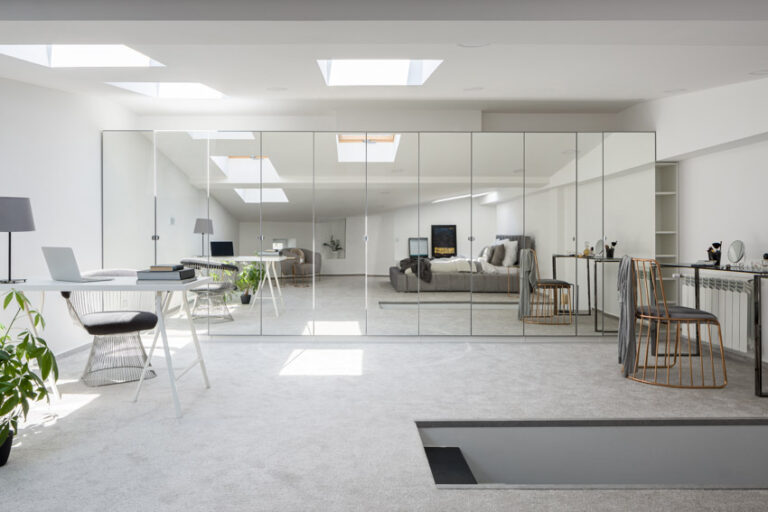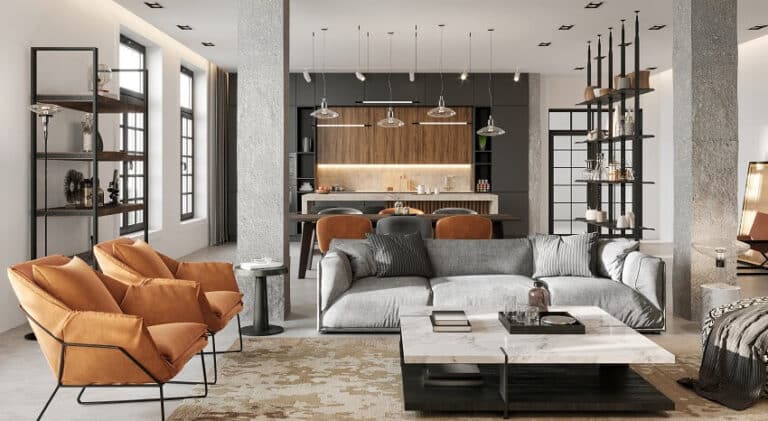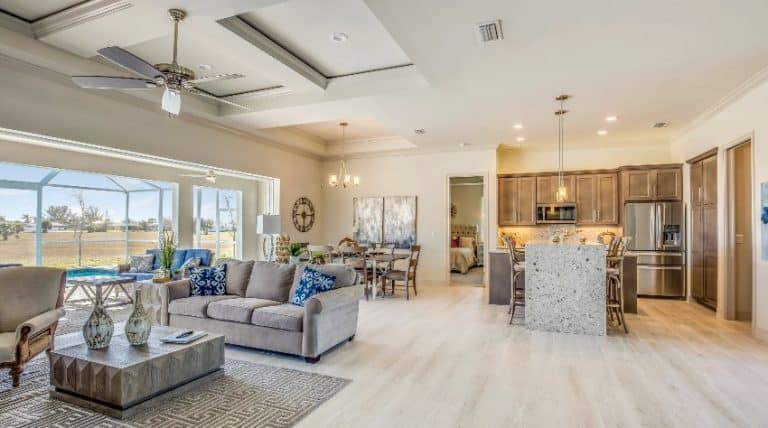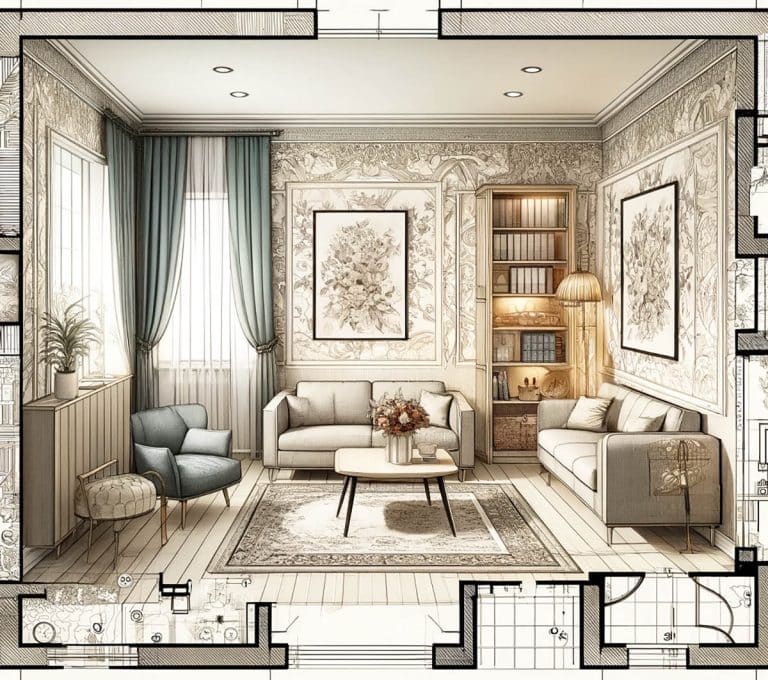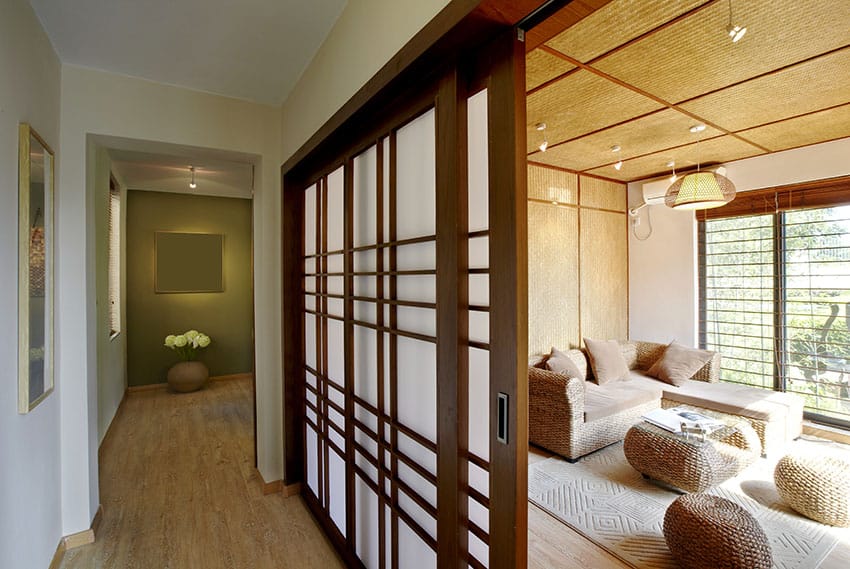Peel and Stick Wallpaper Pros and Cons
Here we share our peel and stick wallpaper pros and cons including its comparison to regular wallpaper, how it works, and factors to consider for removal and installation.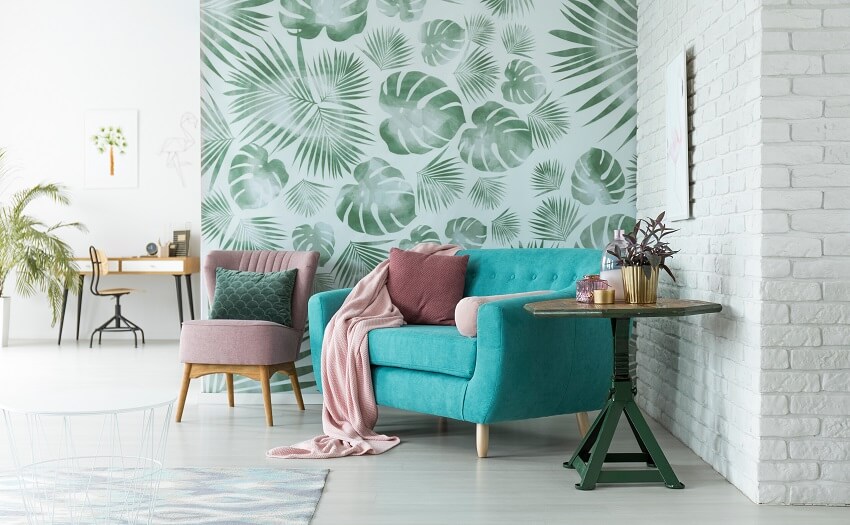
Wallpapers are considered one of the best DIY materials because of how easy you can use them. Training and whatnot are not necessary and you also get to have a wide selection of designs to use on your walls. With the many types of wallpaper to consider, the peel and stick wallpaper is a good place to start.
What Is Peel And Stick Wallpaper?
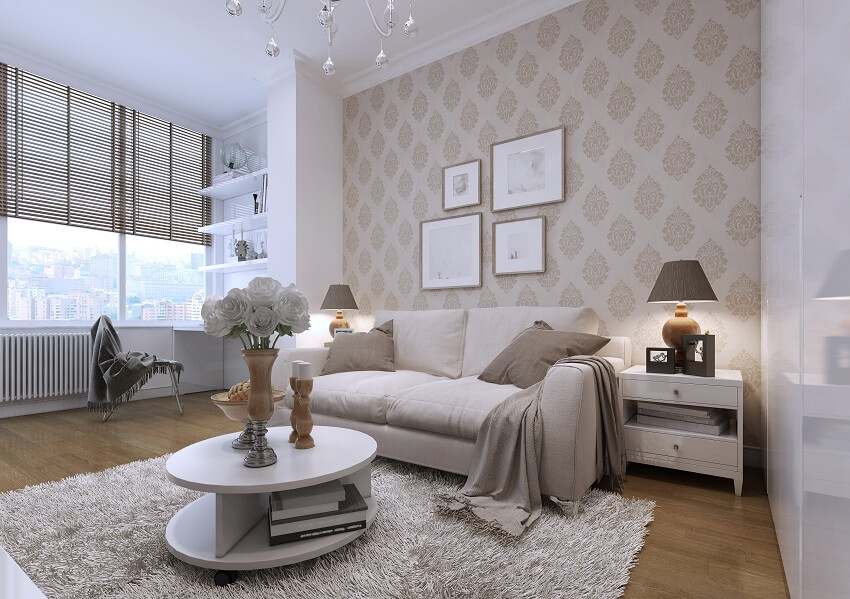
Just like other types of wallpapers, peel and stick can come in a long roll or a precut panel. You can choose what you’re comfortable using. Peel and stick wallpapers also come in two defined textures, which are smooth paper and fabric.
These two textures still have many patterns and designs you can check out. And since it can easily be removed, sampling a roll is easy.
You can install one today just to try it out and if you feel like it doesn’t work for you, you can always try a different pattern, go back to the regular kind of wallpaper, or even to paint, if that’s what you want.
How Does Peel And Stick Wallpaper Work
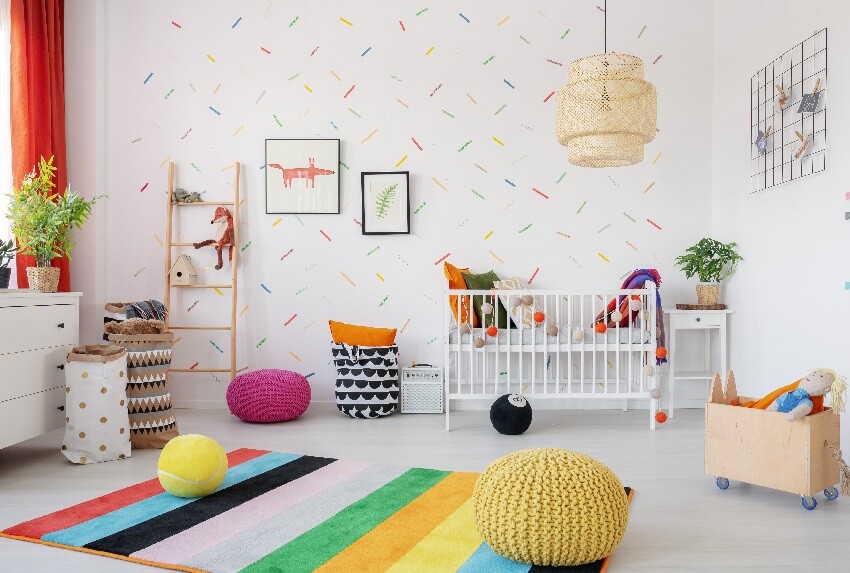
One of the non-negotiables though in using the wallpaper though is that your walls need to be smooth and primed. There might be an issue with the wallpaper adhering to the wall if that’s not the case.
The first thing you do is to prep before the project. This means getting all the needed materials and tools for the installation. Since you will be using self-adhesive wallpaper, getting glue is out of the picture. But you will need the same tools you use in applying traditional wallpaper.
Some of which may include but are not limited to the following:
• Tape measure
• Pencil
• Long level or laser level (Depending on what you prefer using)
• Smoothing tool
• 9mm snap-off razor-sharp snap-off blades
• Seam roller
• Metal straight edge
Before starting, make sure that your walls are clean and free from dirt so that your wallpaper can stick more firmly. Wipe the surface of your walls with a microfiber cloth to do the job.
1. Plan the layout of your peel and stick wallpaper – Measure your wall and determine how much wallpaper you will use and make strips for easier installation.
2. Make a guide by drawing a vertical line down the entire wall – Mark the walls as you a layout using pencil if necessary so that you won’t get lost in your layout.
3. Put the edge of the wallpaper strip in this line – Follow precisely the line you’ve drawn on the wall.
4. Start peeling and sticking the wallpaper strips to the wall – Make sure to use the smoothing tool to avoid wrinkles in the wall.
Pros Of Peel And Stick Wallpaper
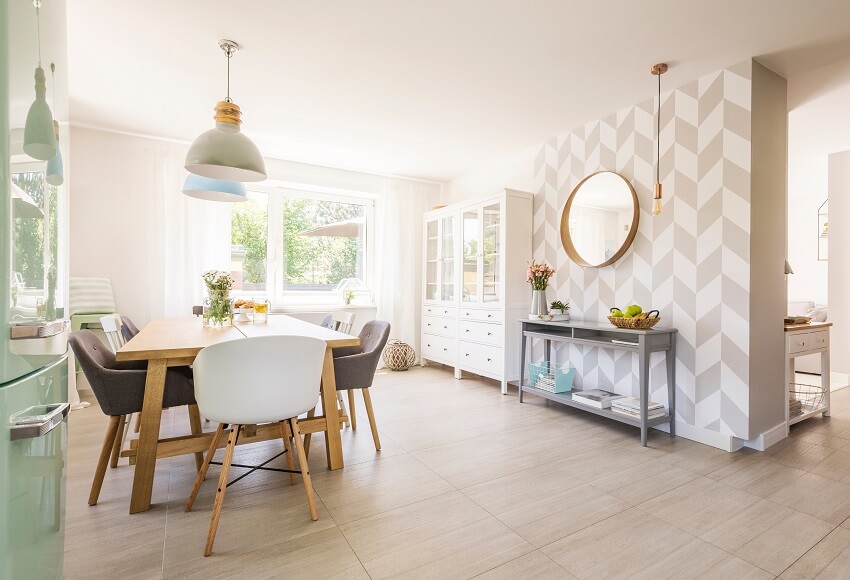
Easy to Apply – Save Money from Labor – The major benefit of a peel-and-stick wallpaper is its convenience and easy DIY application. Since you can accomplish the job, you won’t need to spend money and hire a pro for it.
Since it is easier to install compared to traditional wallpaper, you can save a lot of time and effort with how easy you can apply it on the wall.
Peel and stick wallpaper can stick best with walls that are painted with semi-gloss paint, satin, or eggshell. Remember that if you decide on using this type of wallpaper in the future.
Mess-Free Application Peel and stick wallpapers are self-adhesive, which means you only need to peel the back of the wallpaper and stick them on the wall while smoothing air bubbles along the way to complete the job.
Mixing up the paste and creating a mess is not part of the peel and stick application. And you won’t even need to wait for it to dry since there’s no paste needed!
Damage-Free Walls – It’s easy to install peel and stick wallpapers and it’s also easy to remove them. Compared to traditional wallpaper, you can expect that you won’t have to worry about possible damages to the wall.
This is the reason why many renters prefer using this type of wallpaper not just for convenience but to be able to keep their deposits too!
Easy Maintenance & Cleaning – Cleaning and maintaining your peel and stick wallpaper involves a damp microfiber cloth and that’s it. You only need to wipe the surface to keep it clean.
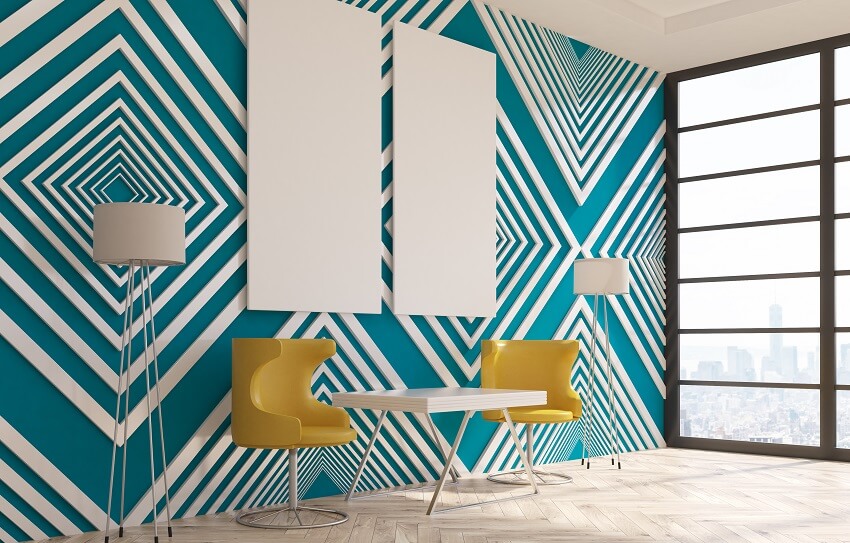
Possible Reuse – With its easy application and easy removal, some manufacturers of the wallpaper claim that you can reuse peel and stick wallpaper given that you’ve been careful in taking it down with the material ending up with no damage.
Maintain Its Texture & Color – Stick and peel wallpapers maintain their colors and textures for many years, especially the ones made of high-quality PVC.
Cons Of Peel And Stick Wallpaper
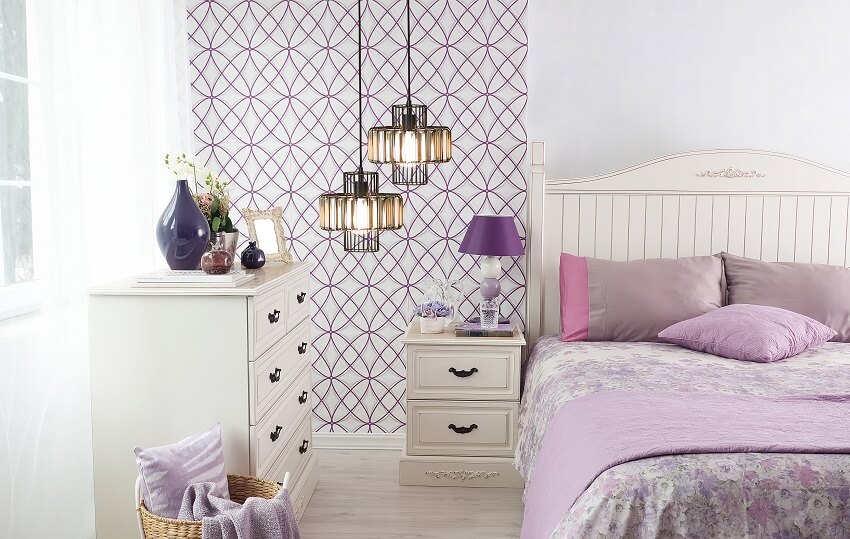
Can be Expensive – High-quality peel and stick wallpapers can be pricey, particularly when you’re going for unique patterns and would need to cover the walls of a large room. While the cost may be acceptable for a small accent wall, it might be too much for an entire room.
While the upfront cost can be costly, bear in mind that the maintenance for using this wallpaper just involves warm water and a piece of microfiber cloth. Compared to paint touch-ups and needing professionals to hire for the job, choosing stick and peel is cost-effective in the long run.
Requires to Paint the Wall Before Application – To get maximum quality and effect, paint the wall to ensure a smooth surface weeks before you plan to apply the peel and stick wallpaper you chose.
Most manufacturers recommend this preparation and use eggshell, satin, or semi-gloss paint so that the wallpaper can adhere to the wall more firmly.
A Little Harder to Match the Seams – It’s difficult to match the seams of a peel and stick wallpaper compared to traditional wallpaper.
The glue required for the application of a traditional wallpaper helps in the seams since you can easily slide it on the wall using the glue and make the necessary adjustments.
With peel and stick wallpaper, lining up the seams is important to be precise since you can’t slide it to make adjustments.
Tricky to Use in Textured Walls – Using peel and stick wallpaper to smooth walls is no problem at all but it’s entirely different with textured walls.
Manufacturers do not recommend applying the wallpaper to bumpy walls since it won’t stick effectively or won’t last long and fall now and then.
Not Friendly to the Environment – Peel and stick wallpaper is made of PVC, which is a man-made material that can be unfriendly to the environment. This high-quality vinyl can be harmful to the environment but when compared to paint, it is worth reconsidering.
Not Heat-resistant – If you choose peel and stick wallpaper, it might not be a good idea to apply it to the kitchen wall. The material the wallpaper is made from is not resistant to heat so it’s best to keep it as far from the stove, fireplace, and other hot areas as possible.
Does Peel And Stick Wallpaper Last?

Aesthetic-wise, you won’t have a problem with the wallpaper since it can look sleek and colorful for a long time.
If you consider how long the peel and stick wallpaper will last glued to the wall, you will need to consider if you apply it effectively in the first place. To ensure its lasting installation on the wall, here are some tips to remember.
1. Paint the wall with the manufacturers’ preferred paint (eggshell, satin, or semi-gloss) 2 weeks before you install the wallpaper
2. Wipe the wall with a damp microfiber cloth before sticking the wallpaper on the wall
3. Make sure that you get rid of air bubbles (You can use a smoothing tool!) as you install the wallpaper
4. Wipe down the surface of the wallpaper with a microfiber cloth regularly to keep its pristine look and quality

Is Peel And Stick Wallpaper Good?
Many benefits peel and stick wallpaper offers that can make it a good option for you. Installation and removal of the wallpaper are convenient, without any need of hired labor for the former and without ruining the walls for the latter.
A wide selection of designs and colors is also available and the cleanup is not heavy work. Maintenance also only requires a quick wipe down and you won’t have to worry about the patterns and colors fading over time too.
These factors make using peel and stick wallpaper a good consideration but it’s always up to you what you prefer and believes to be ideal for your home. Visit some related article like our guide to kitchen cabinet wallpaper here.
Is It Easy To Remove?

You can just choose a corner and start peeling the wallpaper slowly to remove it. Traditional wallpapers become more difficult to remove as they spend more time on the wall and that’s not a worry you will have with peel and stick wallpaper.
Removing peel and stick wallpaper is so easy that you even have the option of reusing the wallpaper in the future and there won’t be damages to the wall after its removal.
Which Is Better Regular Wallpaper Or Peel And Stick?
Peel and stick wallpaper is better than regular paper in several aspects. Here are some of their differences.
| Regular Wallpaper | Peel and Stick Wallpaper |
| Require more time for application (You need to apply glue first and get it up quickly) | Less application time (Just peel the backend of the wallpaper then stick it on the wall) |
| Messier application (With mixing the glue) | Easier and cleaner application |
| Ruin walls upon removal | Do not damage walls upon removal (Can be temporary) |
When it comes to these factors, peel and stick wallpaper is better than regular wallpaper. Of course, there are also areas where the regular ones are better than peel and stick, such as the issue of lining up the seams during application. You may also check out our wallpaper vs paint comparison guide for more related information.
Can You Put Peel And Stick Over Old Wallpaper?

Condition of the Old Wallpaper – Firmly Glued on the Wall – After years, it’s not surprising that that old wallpaper has been damaged. This is fine but make sure that it’s still glued firmly on the wall because you can only effectively stick and new wallpaper if the old one is still firmly glued on the wall.
Only Works on Non-Coated Wallpaper – You can put the stick and peel wallpaper over the old wallpaper only if the old one is a non-coated wallpaper. If it has a vinyl coating, you will be required to remove the old wallpaper before installing the new one.
New Stick and Peel Wallpaper Are Darker than the Old Wallpaper – Once you put the stick and peel wallpaper on top of the old one, it will look darker. This will not be a problem if your new wallpaper already has a dark color in the first place.
You will not get the desired color and look on the wall though if you install a light-colored stick and peel wallpaper and put it on top of a dark-colored old wallpaper.
Have you used peel and stick wallpaper for a permanent or temporary use in the home? Share your experience using thee materials and how your wallpaper installation went int he comments.
Visit our guide on cheap ways to cover walls and how to choose an accent wall in living room for more related content.

